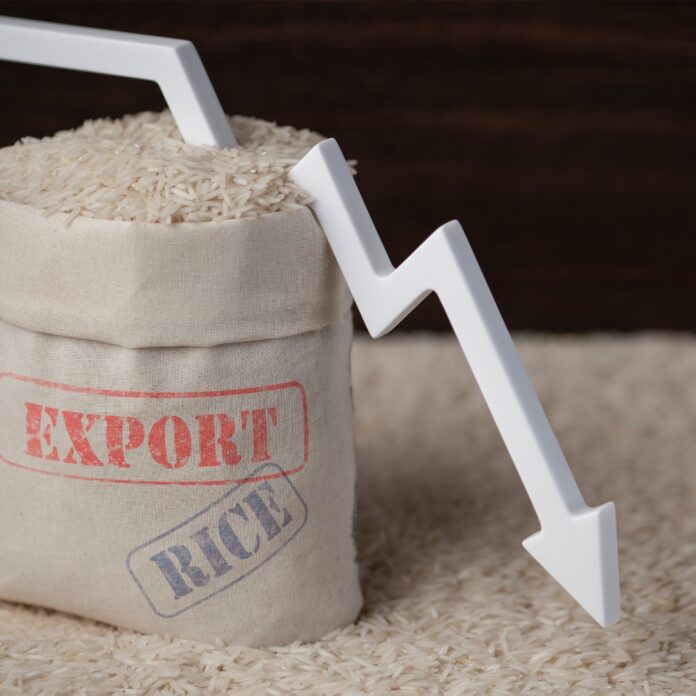Rice plays a vital role in India’s economy, culture, and food security. However, in recent times, the Government of India has taken the bold step of temporarily banning non-basmati rice exports due to rising domestic prices. This move aims to alleviate the pressure on local markets, but it also raises concerns about the long-term sustainability of the rice export market. As the largest exporter of non-basmati rice, particularly varieties like sona masuri, India must carefully consider the impacts of rice export on its economy and the environment.
The Current Rice Export Market in India
Before delving into the implications of the rice export ban, it is essential to understand the significance of India’s role in the global rice market. As the world’s largest exporter of non-basmati rice, India holds a prominent position in meeting the rising global demand for this staple food. Droughts, crop failures, and changing agricultural practices in other rice-producing countries have led to increased demand for Indian rice in the international market.
However, this surge in exports comes with its challenges, especially considering the environmental toll that rice cultivation takes on the country’s water resources.
Environmental Impact of Rice Cultivation
Rice cultivation is notoriously water-intensive, with each acre of production requiring a substantial amount of water. In India, rice consumes about 60 lakh liters or 6,000 cubic meters of water per acre, and it accounts for over 45% of the country’s total water usage in agriculture. The water footprint of producing one ton of rice is approximately 1848 cubic meters, making it a highly water-consuming crop.
The export of rice, in essence, means exporting vast quantities of water along with the grain. For instance, if India exports 22 million tons of rice, it translates to a staggering water footprint of 40.674 billion cubic meters. This level of water usage is unsustainable in the long run, especially considering the growing water scarcity and ecological impact it brings.
Ecological, Economic, and Social Costs of Water Intensive Rice Cultivation
Ecological Impacts: The excessive extraction of water for rice cultivation leads to a depletion of groundwater levels, which affects the availability of water for other purposes. This imbalance can cause severe environmental consequences, such as subsidence and land degradation. Additionally, large-scale irrigation projects and dams often require deforestation, leading to habitat loss and reduced biodiversity.
Economic Costs: Meeting the irrigation demands of rice cultivation puts pressure on the government to subsidize water, provide free electricity for pumping, and offer fertilizers at subsidized rates. These financial incentives can strain the national budget and create economic disparities between states in terms of subsidies and agricultural support.
Social Costs: The heavy focus on rice cultivation can lead to inequalities in agricultural support, where other crops receive less attention and assistance. This imbalance can result in regional disparities and hinder the diversification of agriculture, affecting food security and livelihoods.
The Need for Sustainable Production Models
To mitigate the ecological crisis and maintain the balance between export demands and domestic needs, India must shift towards more sustainable rice production models. Encouraging farmers to adopt low water use methods such as the System of Rice Intensification (SRI), Alternate Wetting and Drying (AWD), and Direct Seeded Dry Rice Production is crucial.
System of Rice Intensification (SRI): SRI promotes organic practices, reduced water usage, and improved crop yields through innovative planting techniques and soil management. By encouraging farmers to adopt SRI, India can significantly reduce its water consumption and environmental impact while maintaining productivity.
Alternate Wetting and Drying (AWD): AWD is a water-saving technique that involves periodically allowing the fields to dry out between irrigations. This approach can substantially decrease water consumption without compromising on crop yield.
Direct Seeded Dry Rice Production: By directly sowing rice seeds in dry fields, farmers can minimize water usage significantly. This method not only saves water but also reduces greenhouse gas emissions associated with traditional rice transplanting practices.
Conclusion
The temporary ban on non-basmati rice exports in India highlights the urgent need to address the ecological, economic, and social implications of rice cultivation. While exporting rice plays a crucial role in meeting global demand, it also means exporting vast amounts of water and exacerbating water scarcity issues domestically. Emphasizing sustainable production models like SRI, AWD, and Direct Seeded Dry Rice Production can help India strike a balance between export commitments and ecological responsibility, ensuring a more sustainable future for its rice sector and the overall economy.
Disclaimer: The thoughts and opinions stated in this article are solely those of the author and do not necessarily reflect the views or positions of any entities represented and we recommend referring to more recent and reliable sources for up-to-date information.









